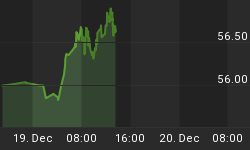SPX has finally succumbed. We have a correction underway which should not endanger the long-term up trend (This decline is not impulsive) but it should extend both in price and time wise. I would not rule out a drop to the 0.5 retracement of the rally off the October lows which also coincides with the 200 dma = 1946
The decline can be much larger due to the following technical reasons:
- The NYSE Summation Index usually follows a cycle: When a sell signal is triggered the next buy signal occurs when the RSI enters the oversold zone. In addition, often it remains oversold for an extended period of time before a new bullish signal cross.

- The same conclusion is derived from the weekly Stochastic of the NYSE Summation Index. A sell signal can remain in force several weeks:

- If we take into account the one year time frame, in a multi-week pullback a bottom has been established when the % of stocks above the 50 dma has dropped below 40%. On Friday 66% were above the 50 dma:

However we do have oversold daily momentum indicators and shorter-term time frame Breadth indicators, which are suggesting that a short-term bottom should be not too far away. Therefore in my opinion the R/R does not favor to be "all in" short, instead I would suggest to cover short positions and look for opportunities on the long side (Bearing in mind that a long setup has to be considered a countertrend play):
- RSI (5) and Stochastic are oversold but in a strong down trend the RSI (14) should not reclaim the 50 line:
- The McClellan has crossed the oversold line, Friday's eod print is below the Bollinger Band and the RSI (5) is displaying a positive divergence:

- The 10 dma of the NYSE Arms Index has printed the second highest oversold reading of the year:

Lets now go to the charts:
Weekly time frame:
- The "sharp" trader should have shorted once price breached 2049. I made a huge mistake since instead of shorting a played in the long side of the bounces
- Now we have a large Marabozu, all things being equal, this candlestick is suggesting that in spite of an intense selloff it could the prelude of the final internal wave structure, maybe a wave (A) of a Zig Zag.
- Usually a small range body follows a Marabozu candlestick.
- We are also at a potential support zone (10 wma)
- If the 10 wma does not hold the next support zone is located in the range 1991 (20 wma) - 1985 (Horizontal support). Given the oversold readings price should stabilize in this range.
- The obvious initial resistance is located at 2020 (September high)
Daily time frame:
- As suggested the rally off the October lows has been completed with a wedge.
- In my opinion, since this up leg looks more corrective than impulsive, odds do not favor a major reversal instead price should carry out a partial retracement. Given the consequences of the sell signal triggered by the overbought Summation Index odds favor an extended downward correction that could test the 200 dma, which today stands at 1946
- Friday's candlestick is also a Marabozu, hence it is probable that we should be close to a potential short-term bottom in the range 2000 (50 dma) - 1994.65 (Gap)
- Next Monday the best setup for a long entry would be a gap down followed by a reversal (Exhaustion gap)
- If we don't have a reversal then there is white space until the 0.382 Retracement = 1978
60 min. time frame:
- The bearish cross of the 50 dma below the 200 dma is suggesting a trend reversal (Another confirmation that the rally from the October low is over)
- The decline from the truncated wedge is corrective and could be counted as a Triple Zig Zag. If this count is correct we are in the final wave (Z)
- The positive divergence of the RSI is suggesting that a bottom of this Elliott Wave sequence should be close.
- If we get the reversal above we have four resistance important levels: R1 = 2020; R2 = 2035.33; R3= trend line resistance; R4 = 50 hma-200 hma (Today they stand at 2049 - 2052)
Next week we have the FOMC on Wednesday and quarterly OPEX on Friday. With "quick feet" there should be opportunities.



















